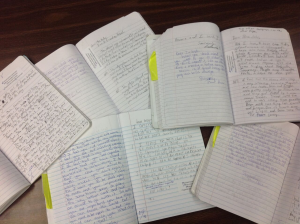The following article was contributed by Angela Kellar, Special Education Coordinator and 7-12 Special Education Teacher at Aberdeen Roncalli Catholic School in the Diocese of Sioux Falls.
Research over the years has shown the importance of inclusionary practices for students with disabilities at all levels as a means to improve social and academic success. It is critical that we use specialized instruction time as well as inclusion time with our students efficiently.
Specialized instruction for students with disabilities should be seen as more than assisting with homework. The goal should be working on essential skills that will help them meet their long-term goals. It is important to know the standards and the progression of skills in order to understand foundational skills as well as the next steps in a skill. A great resource is the National Center and State Collaborative (NCSC) instructional families which outline a baseline of skills progression within and across grades.
Here are some of best strategies to build skills I have developed and used over the years for students third grade and above.
Know the students’ baseline. It is important to know where students are starting using good skills based data. Do more than just have teachers fill out checklists; give the students curriculum based measures. North Central Special Education Coop (see Skills Based Assessment) and Intervention Central are two of my favorite places for these.
One of my responsibilities is to help students determine their best strategies to access and understand material. A quick way to determine possible testing accommodations is to have a student read different grade level passages (from an informal reading assessment or Readworks.org): one aloud, one silently, and listen to someone read two (one in which the student has the passage and one without the passage). I sometimes try this with both multiple choice and open-ended questions to see if there is a preference based on performance.
Peak into their writing process. A timed writing sample is a quick way to assess writing process skills and build the students ability to write efficiently. Often I relate this process to what students should do when responding to an important email. When I had a classroom of my own, I did these weekly. As an intervention teacher I do them once a month. I have modified the writing process based on a curriculum based measure to determine correct word sequences. I do a 2-3 minute plan, 3-8 minute write, and a 2-3 minute proofreading period. These little snapshots are good for use in mini-lessons, finding students common error patterns, and building writing stamina. This helps them in their formal writing and individually cueing them in their proofreading process.
It is important to focus on the message in student writing. There are enough tech tools that can help them with mechanics (check out Grammarly), but keeping a solid message is where they can build their confidence and voice.
Accommodate with tech they have. I am used to a shoestring budget and I want my students to leave with skills using the tools they have access to in the real world. I know that may mean we have a lower quality tool while they are in the class, but it is likely what they will use after they leave my classroom.
Get to know the accessibility options on their phones and tablets. The dictation feature is something I use, so allow them to use it to aid in their writing whether it is just one word or an entire document.
For students who need note-taking assistance, being able to use their device’s camera to snap a quick picture is helpful. Google Keep is an awesome part of the Google Classroom tools that can be used to house notes, or even work as an assignment book.
Get them organized. Most of my students are paper smashers. So my ideal tool for organizing that smash is an accordion folder. I try to buy all of clearance whenever I see them as some students are rough on them (but duct tape helps). I have them store their planners in front and organize their tabs in the order of their classes. These folders fit nicely into backpacks unlike the larger binders.
Create cheat sheets. These are their skills for independence. Setting up good cheat sheets helps students build independence when I am not there. I have my students store their cheat sheets in a sheet protector that they keep in their math book. I have one student who has snapped pictures of them on his Google Keep so he can take them home without forgetting them. Take a look at the cheat sheet I created for my students which includes YouTube video tutorials in case they lose their sheet.
Don’t get stuck in a skill. Just because they cannot subtract whole numbers do not limit them in their exposure to fractions. I am not kidding when I say I had a student who would not baulk at fractions in any operation, but strongly disliked subtracting and dividing whole numbers. I also had a student who would push herself through any math problem that included a variable as she saw it as a puzzle. I never know what is going to stick, and they have a right to get to all skills even if they may not have mastered other skills clocks or money. Give yourself permission to move on. Money now is electronic and clocks are digital. We can get reminders on our phone so we aren’t late.
Build Numeracy skills. Please stop drill and killing students. Build on their natural curiosity with number talks. I used a more guided number talk that I called a math workout where we focused on alternative strategies to basic fact practice once a week. Two books I recommend are Lessons and Activities for Building Powerful Numeracy by Pamela Weber Harris and Making Number Talks Matter by Cathy Humphreys.
Make a multiplication chart. This is a skill that they can always use if they can make it. For most tests in the classroom, my students are often allowed to use a multiplication chart. On our standardized test (we take the ACT Aspire) they are not allowed to be brought to testing. A trick I learned from a GED instructor in my first year of teaching was to get students to learn to make a multiplication chart relatively quickly. Then they can put that on their scratch paper and use it. I have a pattern for teaching this to my students so they do not get overwhelmed with the idea.
Know them as readers. Please read The Book Whisperer by Donalyn Miller. This book changed my approach to getting students to read. It is so important to invest in a student as a reader and get them books they love. Get them books with story and plot. Nothing is worse than easy readers that have no story line. A great series for a controlled but humorous text are the Corrective Reading and Reading Mastery books. These make my students want to come back again and again.
 I also encourage book stacking and book tasting as ways to get kids to branch out. It isn’t a wasted period when students get to read a bit from several books to see if it is worth reading or not. After I did this for the first time with my students, they begged me to do it again. How can I really say no to almost an entire solid 40 minutes of reading with my students who were once reluctant readers.
I also encourage book stacking and book tasting as ways to get kids to branch out. It isn’t a wasted period when students get to read a bit from several books to see if it is worth reading or not. After I did this for the first time with my students, they begged me to do it again. How can I really say no to almost an entire solid 40 minutes of reading with my students who were once reluctant readers.
Another way I have invested in my students’ reading life is through the use of a weekly reading response journal. I have my students respond to prompts each week in a letter format addressed to me. This is a great way to check comprehension and also get to know your students.
Teach them to talk to texts. Reading comprehension is honestly one of the hardest skills for me to teach. but are area with which so many of my students struggle. Then I started teaching them to annotate and talk back with the text. This brought my students thinking so much deeper, especially when we talked about the text. It gave my students a reason or a purpose to read something more than once. Dave Stuart, Jr. has a great article explaining more about this strategy “Purposeful Annotation: A “Close Reading” Strategy that Makes Sense to My Students.”
I will admit I don’t have this all figured out, but God has put some amazing colleagues and students in my life that have taught me a lot. It is important to me as a special educator in a Catholic school that I show my humanity and imperfection by being open about the fact that I am continually learning. I also listen honestly to the pure words spoken by my students both through words and behaviors. Above all else, my biggest tip is to love them and see them for the gift that God made them to the world.
